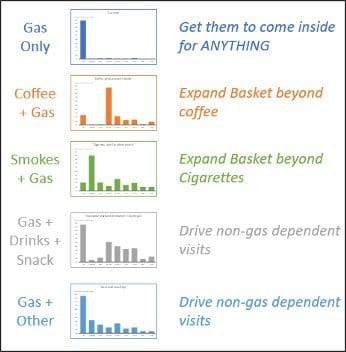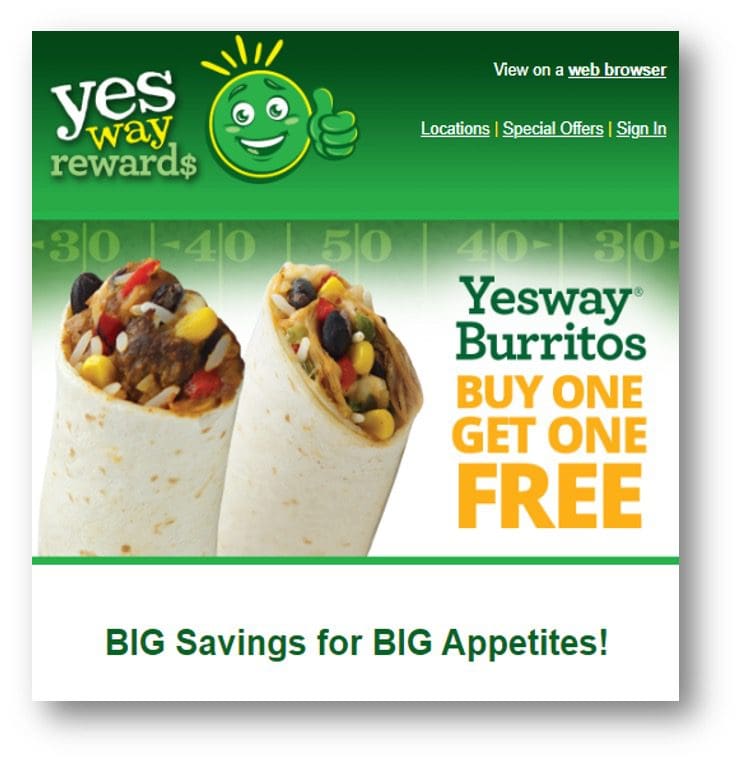3 min read
Convenient Connections Summer Series: 1:1 Campaigns
The Paytronix Convenient Connections Summer Series is a five-part blog that explores successful loyalty campaigns that convenience stores can use to...
Platform
Combining online ordering, loyalty, omnichannel messaging, AI insights, and payments in one platform. Paytronix delivers relevant, personal experiences, at scale, that help improve your entire digital marketing funnel by creating amazing frictionless experiences.
A Complete Customer Experience Platform
Online Ordering
Acquire new customers and capture valuable data with industry leading customization features.
Loyalty
Encourage more visits and higher spend with personalized promotions based on individual activity and preferences.
Catering
Grow your revenue, streamline operations, and expand your audience with a suite of catering tools.
CRM
Build great customer relationships with relevant personal omnichannel campaigns delivered at scale.
Artificial Intelligence
Leverage the most data from the most customer transactions to power 1:1 marketing campaigns and drive revenue.
Payments
Drive brand engagement by providing fast, frictionless guest payments.
Solutions
We use data, customer experience expertise, and technology to solve everyday restaurant and convenience store challenges.
Contactless Experiences
Accommodate your guests' changing preferences by providing safe, efficient service whether dining-in or taking out.
Customer Insights
Collect guest data and analyze behaviors to develop powerful targeted campaigns that produce amazing results.
Marketing Automation
Create and test campaigns across channels and segments to drive loyalty, incremental visits, and additional revenue.
Mobile Experiences
Provide convenient access to your brand, menus and loyalty program to drive retention with a branded or custom app.
Subscriptions
Create a frictionless, fun way to reward your most loyal customers for frequent visits and purchases while normalizing revenues.
Employee Dining
Attract and retain your employees with dollar value or percentage-based incentives and tiered benefits.
Order Experience Builder
Create powerful interactive, and appealing online menus that attract and acquire new customers simply and easily.
Loyalty Programs
High-impact customizable programs that increase spend, visit, and engagement with your brand.
Online Ordering
Maximize first-party digital sales with an exceptional guest experience.
Integrations
Launch your programs with more than 450 existing integrations.
Loyalty Programs
Deliver the same care you do in person with all your digital engagements.
Online Ordering
Drive more first-party orders and make it easy for your crew.
Loyalty Programs
Digital transformations start here - get to know your guests.
Online Ordering
Add a whole new sales channel to grow your business - digital ordering is in your future.
Integrations
We work with your environment - check it out.
Company
We are here to help clients build their businesses by delivering amazing experiences for their guests.
Meet The Team
Our exceptional customer engagement innovations are delivered by a team of extraordinary people.
News/Press
A collection of press and media about our innovations, customers, and people.
Events
A schedule of upcoming tradeshows, conferences, and events that we will participate in.
Careers
Support
Paytronix Login
Order & Delivery Login
Resources
Learn how to create great customer experiences with our free eBooks, webinars, articles, case studies, and customer interviews.
FlightPaths are structured Paytronix software onboarding journeys designed to simplify implementation and deliver maximum ROI.
Customer Success Plans (CSPs) are tiered service offerings designed to help you get the most from your Paytronix software, whether you prefer self-guided support or hands-on partnership.
See Our Product In Action
E-Books
Learn more about topics important to the restaurant and c-store customer experience.
Reports
See how your brand stacks up against industry benchmarks, analysis, and research.
Blog
Catch up with our team of in-house experts for quick articles to help your business.
Case Studies
Learn how brands have used the Paytronix platform to increase revenue and engage with guests.
101 battle-tested tips to reclaim your margins without sacrificing your brand’s guest experience.
1 min read
Sep 09, 2020
The Paytronix Convenient Connections Summer Series is a five-part blog that explores successful loyalty campaigns that convenience stores can use to drive user engagement, win back customers, successfully segment customer groups, and ultimately drive incremental revenue. Look for the Summer Series throughout the months of August and September.
Because the concept of convenience stores came about in response to the rise of American driving culture, they were once primarily vendors of fuel, tobacco, and soft drinks. Hence, the c-store phrase “gas, Cokes and smokes.”
Today, c-stores offer much more, from freshly prepared meals to basic grocery items; but many convenience store brands still see a large subset of customers that only visit the pump or head to the convenience store interior looking for tobacco. This leaves the brand with limited options, since gas’ and tobacco’s low margins and legal limitations make these difficult, if not impossible, to promote.
That’s where clustering comes in. Clustering is a form of segmenting customers based on commonly shared behaviors or characteristics. It’s used to find distinctions among large groups that share a common trait to enable more a more personalized approach to marketing. This can take many forms, but a common use case lies in grouping customers based on items that drive them to visit.

It works like this: the convenience store brand may identify a group of customers who regularly buy tobacco. At first glance, this might appear to be all the group has in common; other factors, like age, time of day, or gender may cross all demographic categories. This leaves the c-store with little to market these consumers with, because most states have strict laws around tobacco marketing; but these customers represent a very valuable customer segment.
The brand might use clustering to identify other behaviors that customers in this group share to create smaller, more targeted clusters. If the brand were to find another common purchase among these customers, that product could be leveraged to attract or reward valuable consumers whose primary purchase-driver – tobacco – is not a viable marketing strategy.
Let’s say this brand found that of the customers who regularly buy tobacco, 35% also regularly purchase energy drinks. The brand could promote an energy drink to this cluster, effectively driving these high-value customers into the store for an extra visit without having to market the tobacco products they frequently purchase.
This is only one example of how clustering can be used. There are endless possibilities for the creative marketer with clustering capabilities and a strong loyalty program plus knowing how to measure loyalty program success.
3 min read
The Paytronix Convenient Connections Summer Series is a five-part blog that explores successful loyalty campaigns that convenience stores can use to...

5 min read
The Convenient Connections Summer Series is a five-part blog that explores successful loyalty campaigns that convenience stores can use to drive...